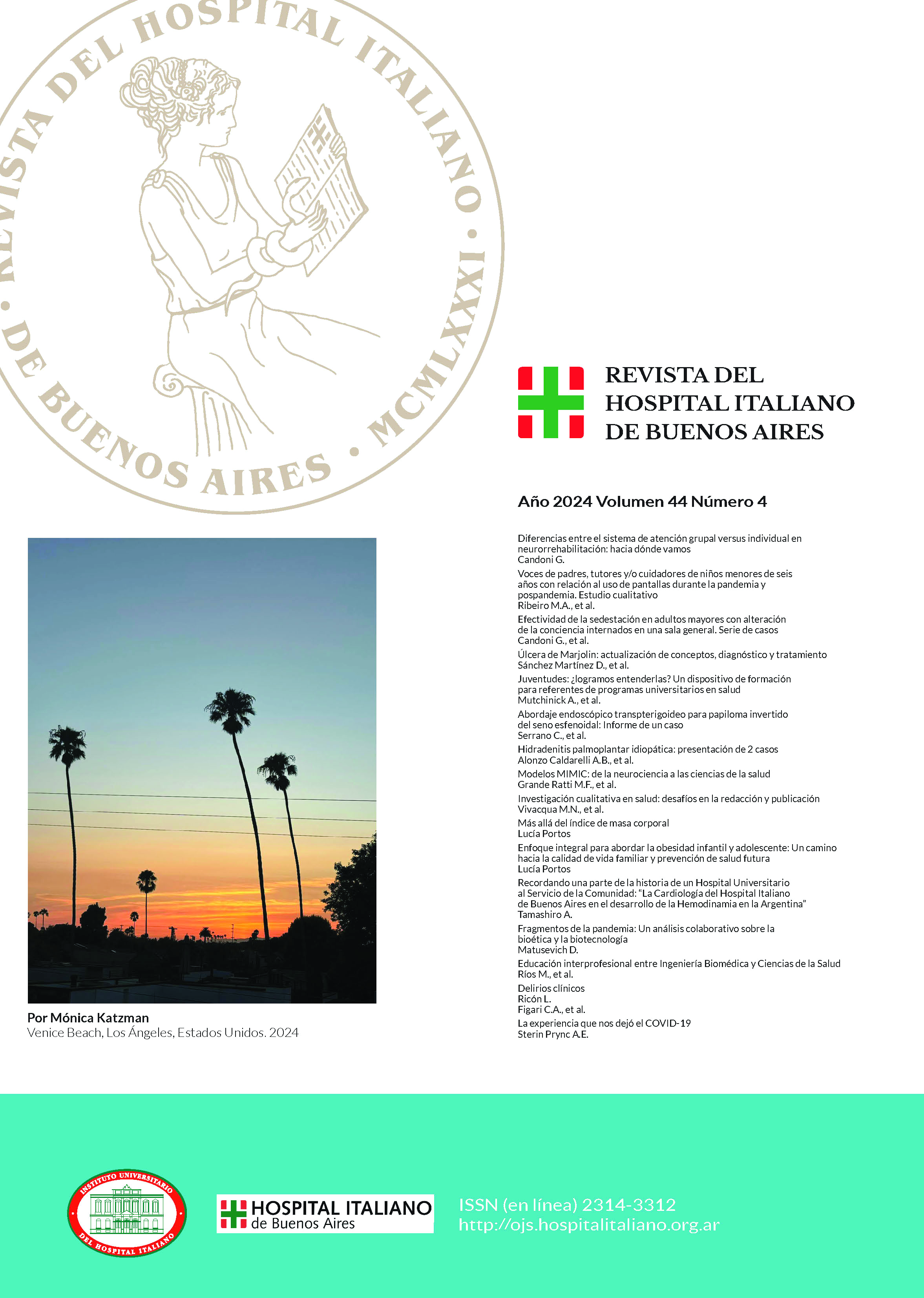Diferencias entre el sistema de atención grupal versus individual en neurorrehabilitación: hacia dónde vamos
Contenido principal del artículo
Resumen
La demanda de rehabilitación está creciendo; sin embargo, los estudios que demuestran ser superiores en el formato grupal lo hacen a través de la significancia estadística, no por la significancia clínica. La rehabilitación individual puede brindar mejor interacción paciente-terapeuta y, por lo tanto, puede ser beneficiosa para algunas personas.
Downloads
Detalles del artículo
Sección

Esta obra está bajo una licencia internacional Creative Commons Atribución-NoComercial-CompartirIgual 4.0.
Cómo citar
Referencias
Hidding A, van der Linden S, Boers M, Gielen X, et al. Is group physical therapy superior to individualized therapy in ankylosing spondylitis? A randomized controlled trial. Arthritis & Rheumatism: Official Journal of the American College of Rheumatology. 1993;6(3):117-25.
https://doi.org/10.1002/art.1790060303
Robertson B, Harding KE. Outcomes with individual versus group physical therapy for treating urinary incontinence and low back pain: a systematic review and meta-analysis of randomized controlled trials. Arch Phys Med Rehabil. 2014;95(11):2187-98.
https://doi.org/10.1016/j.apmr.2014.07.005
Renner CI, Outermans J, Ludwig R, et al. Group therapy task training versus individual task training during inpatient stroke rehabilitation: a randomized controlled trial. Clin Rehab. 2016;30(7):637-48.
https://doi.org/10.1177/0269215515600206
Kang M, Bladon J, Sergio LE. Group format rehabilitation is equally effective as individual therapy in patients with surgically repaired rotator cuff tears. Physiother Res Int. 2020;25(1):e1795.
King LA, Wilhelm J, Chen Y, et al. Effects of group, individual, and home exercise in persons with Parkinson's disease: a randomized clinical trial. Journal of Neurological Physical Therapy. 2015;39(4):204-12.
https://doi.org/10.1097/NPT.0000000000000101
Sweeney KG, MacAuley D, Gray DP. Personal significance: the third dimension. Lancet. 1998;351(9096):134-6.
https://doi.org/10.1016/S0140-6736(97)06316-2
Van Kessel G, Hillier S, English C. Physiotherapists' attitudes toward circuit class therapy and 7 day per week therapy is influenced by normative beliefs, past experience, and perceived control: A qualitative study. Physiother Theory Practice. 2017;33(11):850-8.
https://doi.org/10.1080/09593985.2017.1357152
Bennett L, Luker J, English C, et al. Stroke survivors' perspectives on two novel models of inpatient rehabilitation: seven-day a week individual therapy or five-day a week circuit class therapy. Disable Rehabil. 2016;38(14):1397-406.
https://doi.org/10.3109/09638288.2015.1103788
Lahelle AF, Øberg GK, Normann B. A group-based, individualized physiotherapy intervention for people with multiple sclerosis-A qualitative study. Physiother Res Int. 2018;23(4):e1734.
https://doi.org/10.1002/pri.1734
Morris ZS, Wooding S, Grant J. The answer is 17 years, what is the question: understanding time lags in translational research. JR Soc Med. 2011;104(12):510-20.

